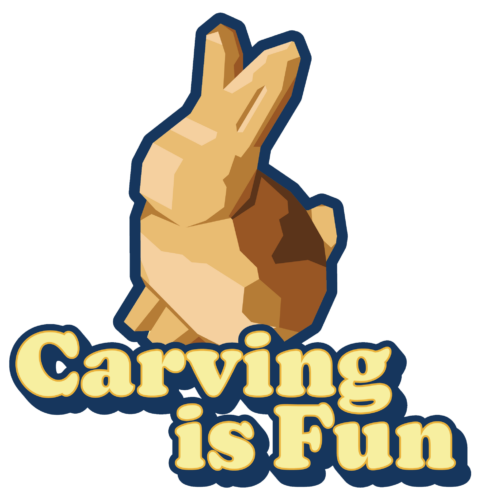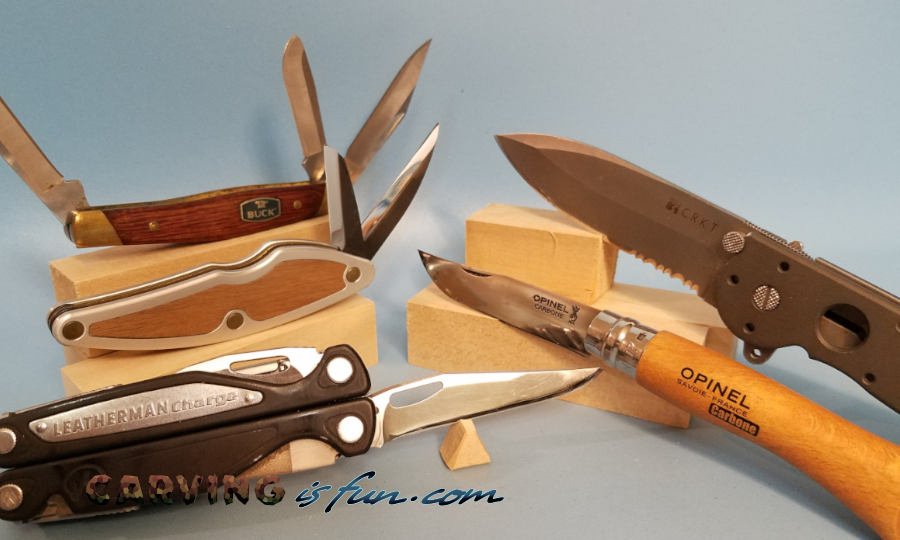You don’t need a specialized whittling knife to carve wood, you can use your trusty pocket knife instead!
I have been whittling with my pocket knives since I was 10 as they were what was in my pocket while camping. They are super convenient to carry with you where ever you go and I personally never leave home without mine.
There are several little tips and tricks that I have picked up over the years that can benefit anyone who wants to whittle with there pocket knives.
Dedicate at least One Blade Just For Whittling
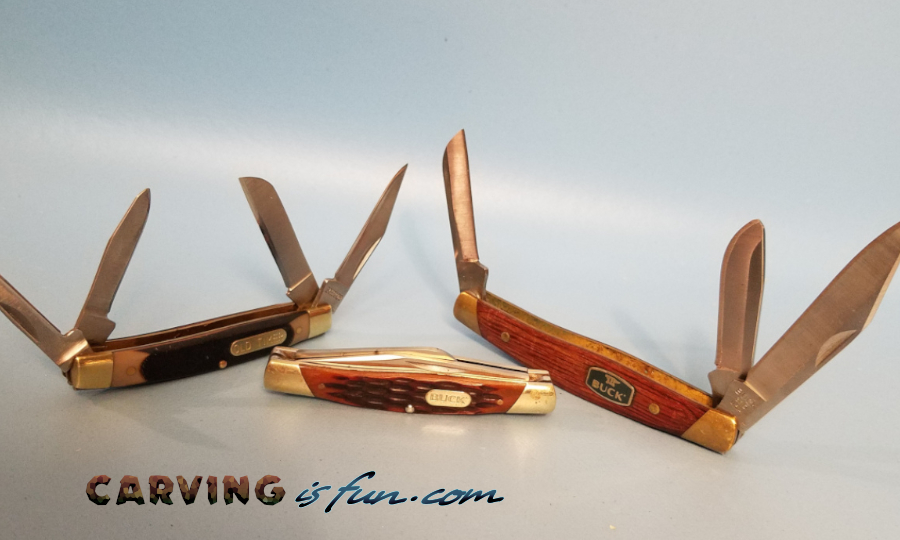
Ideally, you want a nice sharp knife for whittling. Having any nicks or dull spots on the blades edge will make it harder to whittle.
If your pocket knife has multiple blades, reserve at least one of the knives just for whittling. This allows you to always have a knife ready to use when you are away from your sharpening tools.
Now for people who only have one blade on their folding knife, you could carry an extra knife reserved just for whittling. I carry an extra knife right next to my multi-tool that is just for whittling. This knife is honed razor sharp and has a nice thin edge perfect for slicing through wood.
Shape The Cutting Edge of Your Preferred Whittling Knife

Lots of your pocket knives are wide bladed knives or have a more rounded point. These knives may be more difficult to add fine details in the wood with as it will be harder to make smaller cuts with the wider tips.
If you have a sharpening stone, I would recommend grinding the knife tip to a nice, thin point to make it easier to add details. This may take some time to do, but it is worth it in the end.
Use The Smallest Blade Last
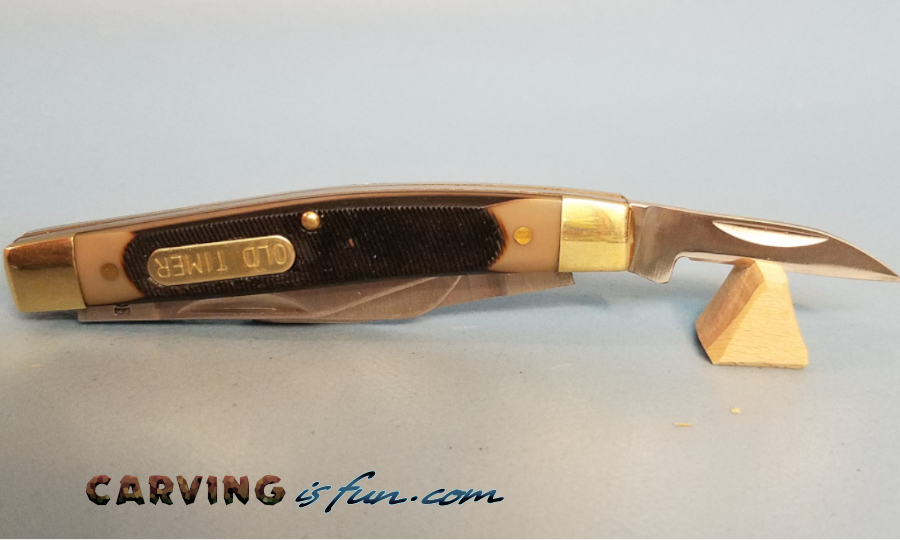
If you have a few knives reserved for whittling, save the smallest one for last. This way you have a nice and small knife that is still sharp to add details.
You can also save some of the more intricate sections of your whittling project for last to use with the smallest knife. Try and do as much of the whittling before hand with the larger knives and work your way down as the blade starts to dull and more detail is needed.
Thinner is Better
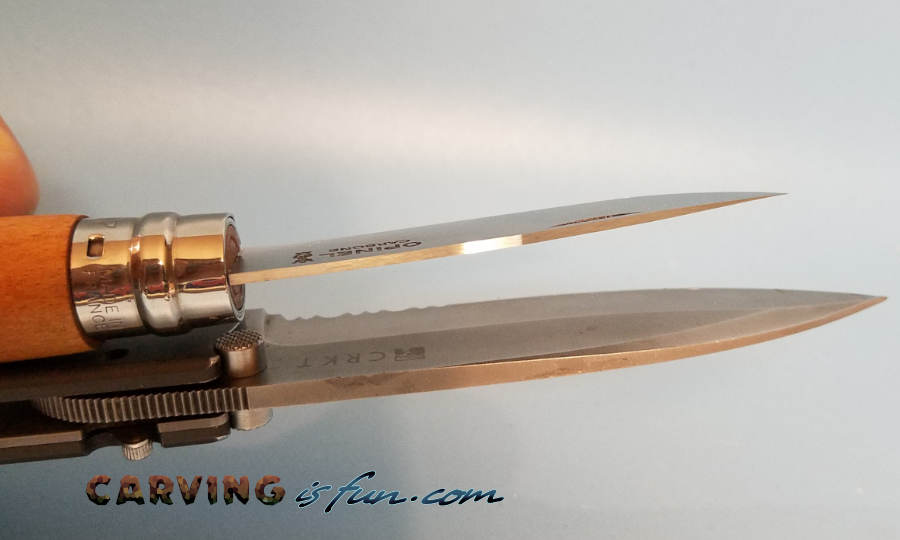
Many pocket knives on the market usually have thick bladed knives for general purpose use. Even if these knives are razor sharp, the blade thickness will slow you down.
Whittling knives are thinner than your average knives and this allows you to quickly remove slices of wood compared to that of a thicker knife.
You can still whittle with a thicker knife, but you may find that you can only take smaller chips of wood off and may have trouble getting finer details carved in the wood.
Buy High Quality Steel
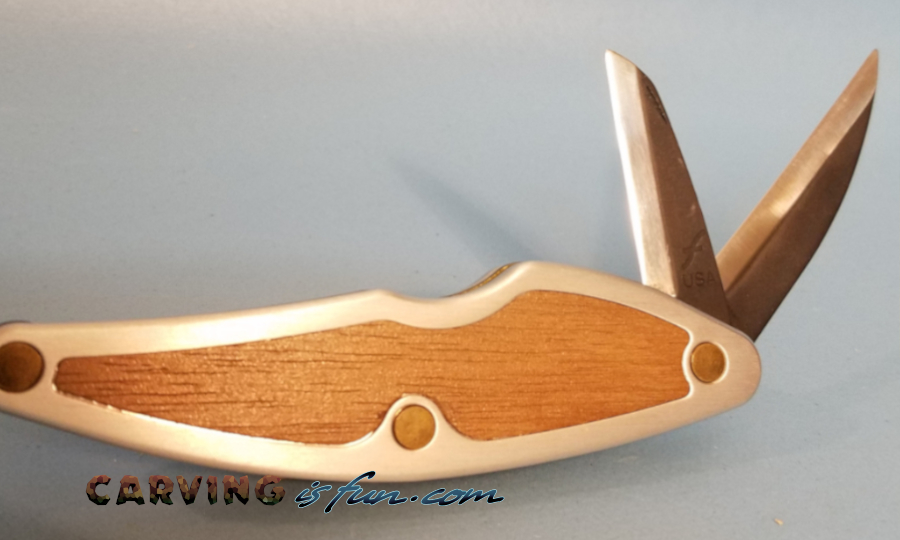
One major factor in how long your knife will hold its razor sharp edge is the quality of the steel. If the steel is too soft you will have to constantly sharpen it to maintain an effective cutting edge.
Higher quality knives usually use a harder steel made with more carbon. Some of the steels you will see with this are 420HC, 440C, and 154CM and have a Rockwell (RC) hardness around 58 to 60, providing you with a durable edge that can achieve and maintain a razor sharp edge.
Keep in mind that these knives can also be more expensive, but I find them to be well worth the money. You can always check with the manufacture on what steel your knife uses and its RC hardness rating.
Push From The Joint, Not the Back of The Knife
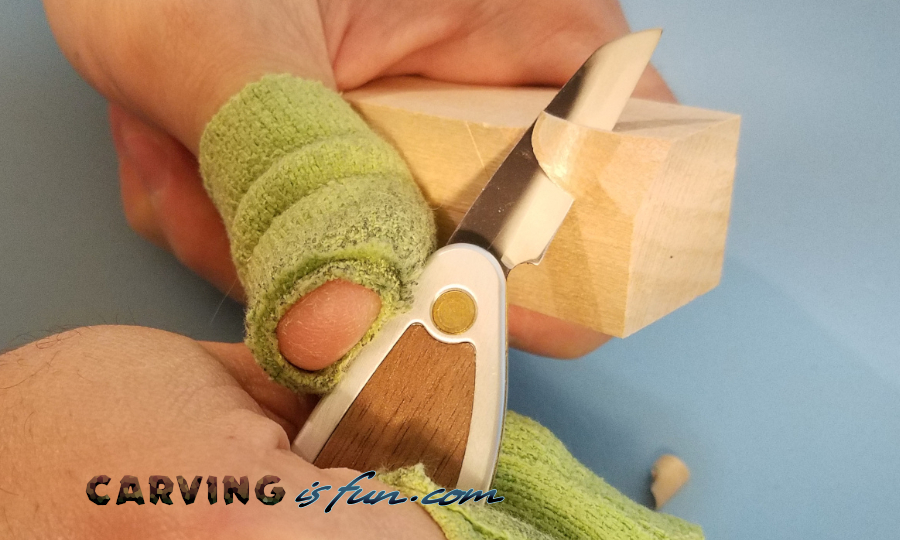
Quite a few pocket knives do not have a locking mechanism on them and can close up on your fingers if you aren’t careful.
I found the best way to provide extra force and control when whittling with a non-lock blade knife is to push from the joint where the knife folds into the handle. This way you don’t risk pushing on the blade and closing it on your hand.
If you have a locking knife, this may not apply to you. I myself prefer using locking blades as I have had one too many knives close up on my fingers while using them.
Protect Your Fingers

Whenever I’m using a folding knife, both locking and non locking, I like to wrap my pointer finger in some athletic tape or just something to prevent it from getting cut.
If you have something protecting your pointer finger, you can both prevent the knife from cutting you if it closes on you and you can sometimes choke up on the knife a little for a bit more control for detailed work.
You can also use tape or a finger guard. I use athletic tape and slide it on and off, after using it I just wrap it around the knife and put it in my pocket.
Small Shallow Cuts
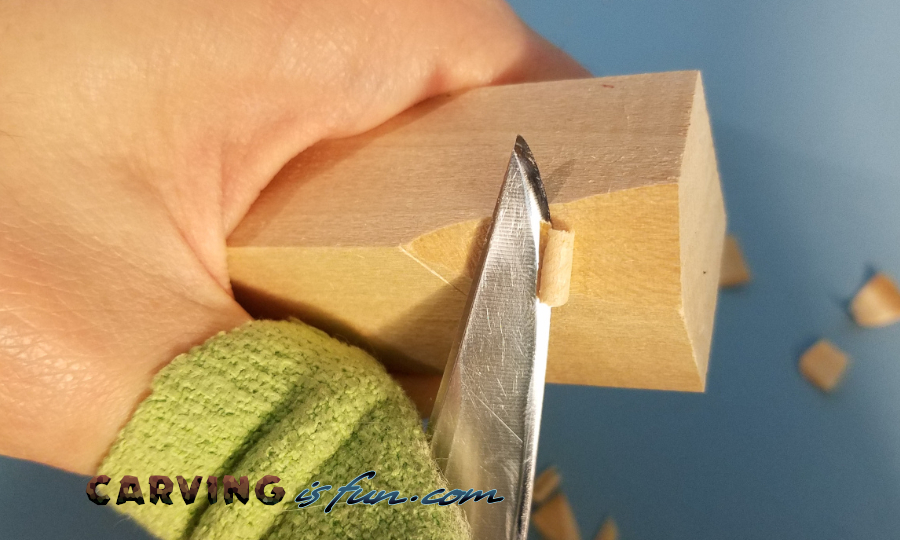
Since quite a few pocket knives aren’t designed specifically for whittling, you may have to adjust how much wood you try and cut off in each pass.
I find that focusing on making smaller shallow cuts with my pocket knives prevent me from accidentally taking too much wood off in one pass and help compensate for the lack of precision that a small and thin whittling knife offers.
This part is completely up to you. If you feel comfortable taking larger cuts do it. This is merely a suggestion that has helped me when using general purpose pocket knives.
Use a Knife That Fits Your Hands
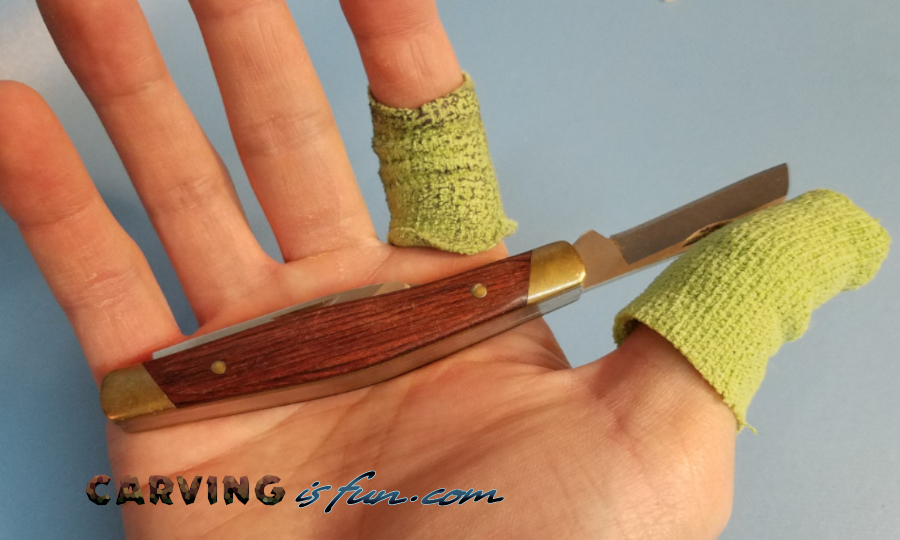
If you are going to be whittling for a while, you will want to use a knife that is comfortable to hold an can be easily manipulated.
Using small pocket knives are harder to hold on to can both be a safety issue and prevent you from making smooth controlled cuts in the wood. I have had one too many small pocket knives slip in my hands causing injuries or falling on the ground and getting damaged.
I like my knife handles to be able to extend the width of my hand so that I can maintain a secure hold with all of my fingers wrapped around it. If the knife can only reach from your pointer finger to your ring finger, it may still work but you may loose some control and dexterity.
Make Use of All of the Tools in Your Pocket Knife
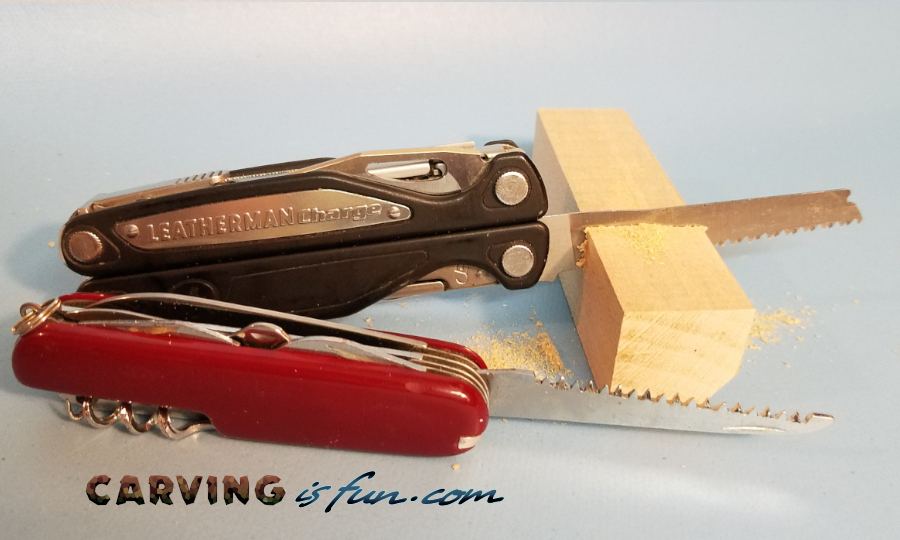
For those of you using a multi tool or swiss army knife, you may have access to a bunch of other tools in the knife besides just the cutting blade itself.
If your knife comes with a wood saw, file, or even a chisel (or something you can turn into one) make use of it to save time and reduce hand fatigue.
Of all the tools in my pocket knives and multi-tools that I carry with me every day, I use the small wood saw and serrated knives the most to remove excess wood and roughly shape the figure I am working on before using the knife.
Doing this will help you maintain your sharp cutting knife for whittling and not prematurely wear it down before you even get to the details.
If you are ready to start whittling, check out my One Stop Whittling Resource Page for more information.
